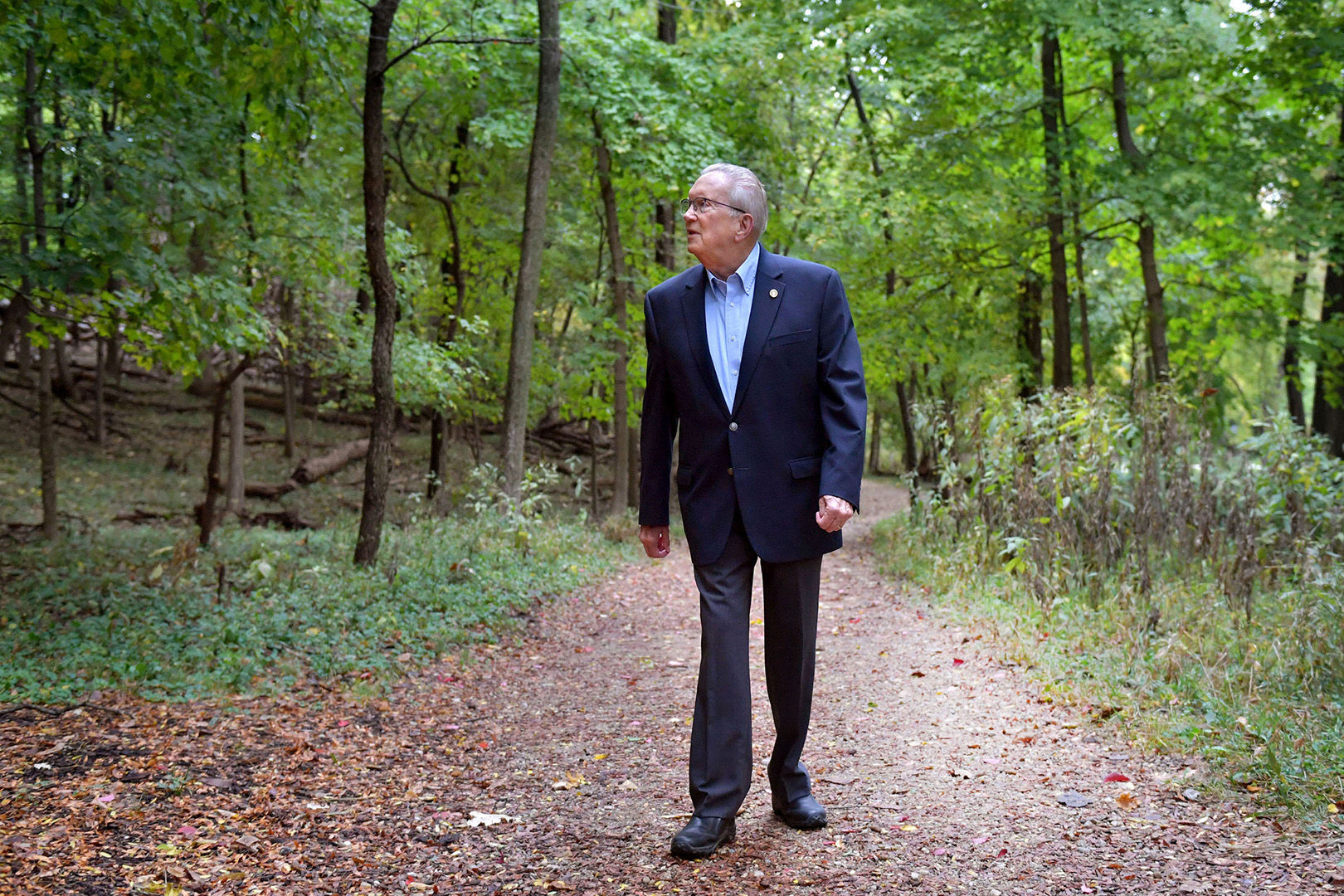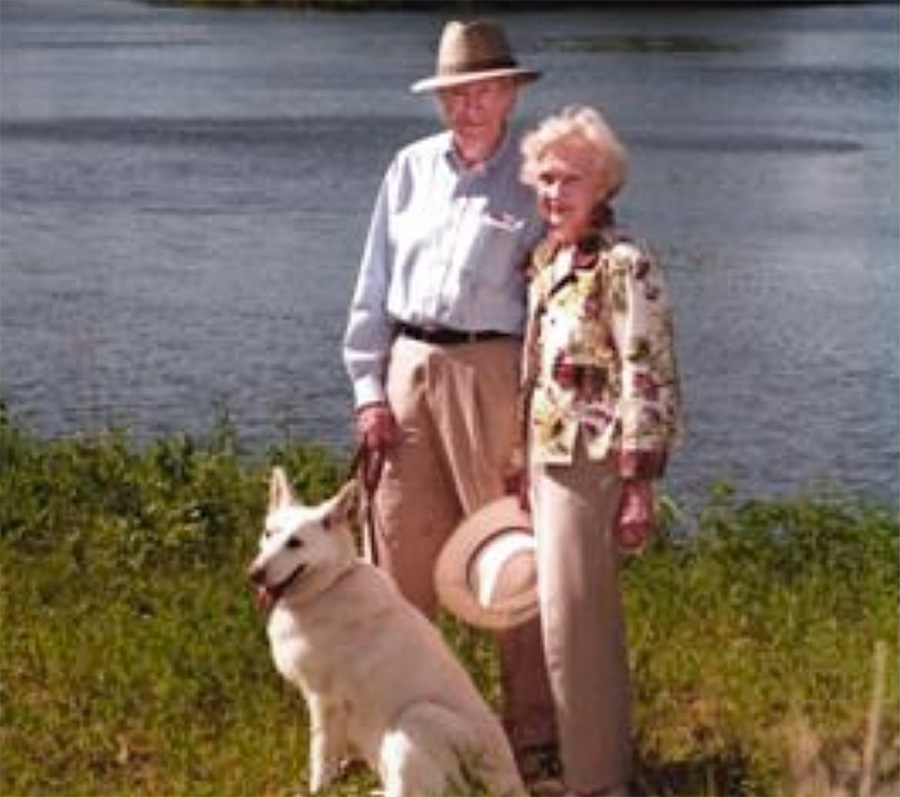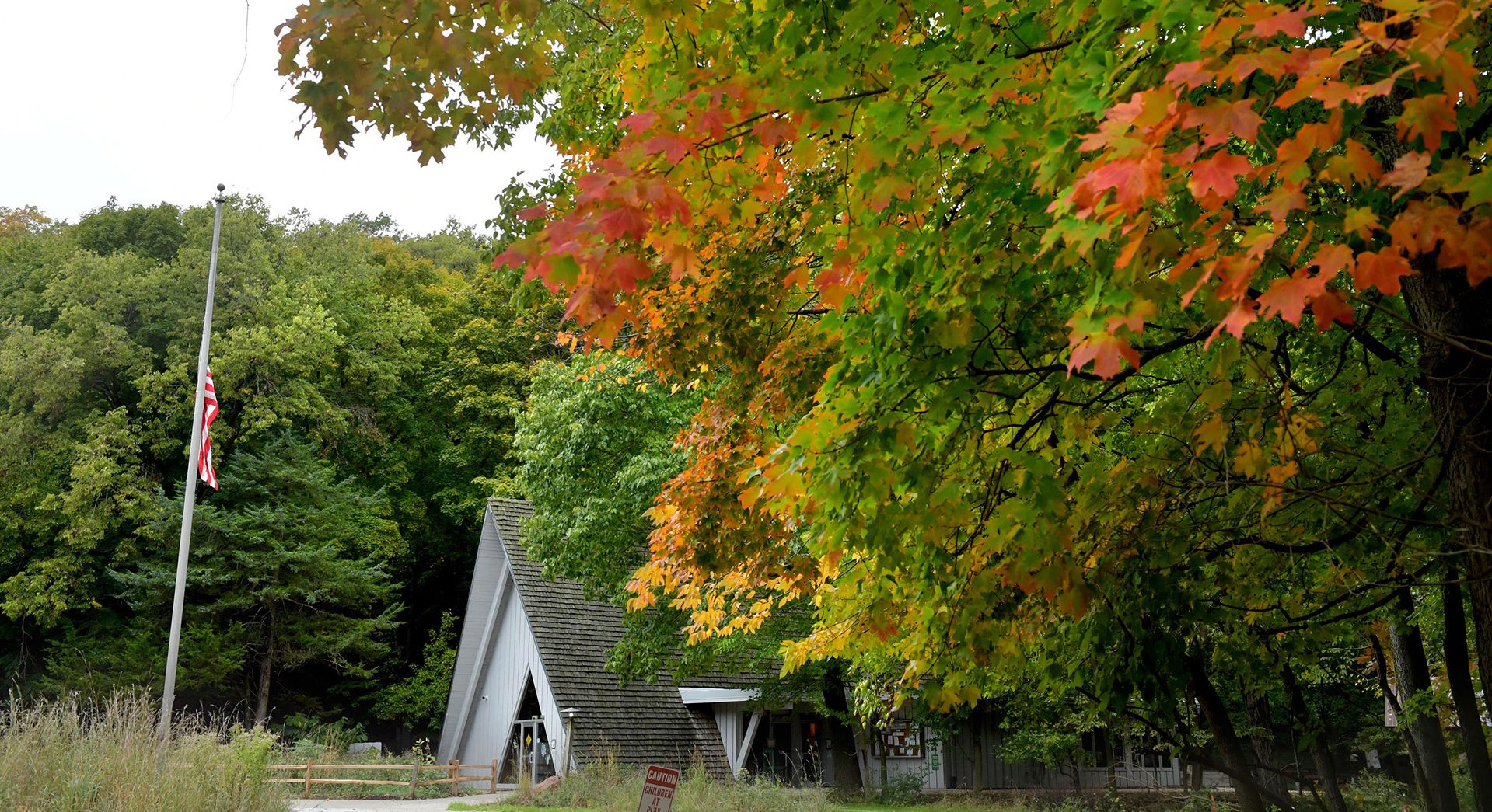The philanthropic organization founded by three of Peoria’s biggest names left a mark like no other in central Illinois
The Forest Park Foundation, a gift that has kept on giving to the Peoria area for 84 years, has come to an end.
In September the Foundation’s treasurer, local attorney Jim Tomlin, filed the paperwork to dissolve the organization, leaving a legacy of generosity and vision.
Although the Forest Park Foundation (FPF) came to be known in recent decades for acquiring land for the public good, it started out helping the elderly as its primary mission.

Originally named the Forest Park Home Foundation, it was created in 1939 by Dr. Leslie Rutherford, a physician; W.H. Sommer, of the Sommer family that owned Keystone Steel and Wire; and Howard Kinsey, a Peoria businessman. They were looking “to discuss a growing problem of what to do about our old people. They were increasing in number and housing was becoming a problem,” Rutherford later said.
At any one time, the Foundation had from 35 to 40 members, who elected its officers.
The Foundation’s first big project was financing the construction of Forest Park Home, a 114-bed hospital connected to and operated by St. Francis Hospital, to care for elderly patients. The building opened in 1950 and is still in use today, housing acute care patients.

The Foundation members soon realized caring for just the elderly wasn’t exactly their niche, said Tomlin, who would become the organization’s vice president and treasurer. “It was about people who were ill and needed to have a place to receive rehabilitation,” including polio patients and service members injured in World War II. “The rehabilitation portion was really important to the founders, to Bill (Rutherford) and to the Forest Park Foundation.”
Hence, the Foundation created the Institute of Physical Medicine and Rehabilitation (IPMR), which was first located inside Forest Park Home. Additional IPMR locations opened in Methodist Hospital and Proctor Hospital. IPMR existed as an independent, non-profit entity in multiple locations throughout the Tri-County area until merging with OSF in 2015.
Other health care- and senior-related donations over the years included:
- In 1959, $13,000 for the construction of Kiwanis London House, providing independent living for seniors to this day;
- In the early 1960s, the contribution of five acres and $25,000 for a 50-unit facility called Lutheran Welfare Home, now Lutheran Hillside Village;
- The creation of Meals on Wheels during the 1950s;
- The gift of the land for Apostolic Christian Home on Skyline Drive;
- The creation of Galena Park Home.
In 1956, the Foundation received a special award from the Illinois State Medical Society for making “the most substantial contributions to the health of Illinoisans, for restoring to usefulness physically handicapped persons and for its pilot program to rehabilitate old people who might otherwise spend their declining years in helplessness.”
Time for a change
By the mid-1950s, Bill Rutherford, son of Dr. Rutherford and son-in-law of W.H. Sommer, two of the founders, had become the voice of the Forest Park Foundation, with wife Hazel (Sommer’s daughter) always at his side.
“Bill was a tax attorney. He was a very good attorney,” said Tomlin.
“The money for Forest Park Foundation came from a wide array of the general public, but mainly the Sommer family and Hazel Rutherford,” he said. “A large part of Forest Park Foundation had come about through the investments made with the funds that came from her side of the Sommer family.
“Most of the land that ended up in use by the public in one way or another came … through the Rutherford family,” added Tomlin. “Either Bill or his wife or son had ownership of land they then donated.”
In a personal account of the Foundation, Rutherford wrote: “In the early 1960s, having accomplished our mission on Physical Medicine and Rehabilitation, we shifted to the area of open space acquisition. Our hospital and geriatrics work had brought us into the subject of community planning, as none had existed in Peoria at that time.”
As such, the Foundation was instrumental in getting the Tri-County Regional Planning Commission established.
At a meeting of park board candidates in 1965, Rutherford said, “There is a crisis in this country whereby construction and misuse of land will lead to a situation where kids will not have woods to walk in and older persons will not have anything green and pleasant to look at.”
In 1966 at a Peoria Riverfront Development Committee meeting, Rutherford called the riverfront a disgrace. “Try to dream a little bit as to what the riverfront improvement will mean to the future,” he said.
The Foundation then saved the former Rock Island Railroad Depot on the riverfront from being demolished for a Sears parking lot, purchasing the depot and the land down to the river’s edge for $115,000. From 1981 to 2000, the old depot housed The River Station restaurant and is now home to Martini’s and the Blue Duck BBQ Tavern.
Sometimes the Foundation was a conduit, whereby landowners donated land, willed their property or estate, traded acreage or sold their land to serve future generations. The Foundation sometimes purchased the option on land that might be useful later. In turn, FPF would donate the land to the State of Illinois or area park districts, with the Peoria Park District receiving the lion’s share.
When land was available, Rutherford could be impatient about moving on it. In 1966, he urged the Peoria Park Board to speed up its acquisition process. The board president told Rutherford the staff workload prevented a quicker response. Rutherford responded two weeks later with a $25,000 donation expressly for hiring personnel to speed things up.
Among the Foundation’s donations of land over the years:
- 1,000 acres adjacent to Jubilee State Park, to the state;
- Robinson Park, between Peoria and Chillicothe, to the Peoria Park District;
- Land to establish parks in the names of all three Foundation founders;
- Safety Town, to the Peoria Park District;
- The 28-mile Rock Island Railroad right-of-way, from Alta to Toulon, which would become the landmark Rock Island Trail after FPF “wrangled for 20 years before the trail was accepted as a state park, with 100 acres of adjoining farmland from the foundation for rest areas and camping,” Rutherford wrote;
- $150,000 for renovations in Peoria Heights including creation of Tower Park, the construction of its water tank and observation deck, and a new Village Hall;
- The Forest Park Nature Center, a nature preserve of more than 500 acres that will remain open to the public in perpetuity, preserving the land in its natural state under the auspices of the Peoria Park District.
Meanwhile, the Foundation helped save Peoria City Hall from demolition after paying for architectural and engineering studies to convince the City Council to keep it.
The crown jewel
As the Foundation is dissolved, Wildlife Prairie Park will be the recipient of its final largess.
Opened in 1978, Wildlife Prairie Park was started by Bill and Hazel Rutherford, not the Forest Park Foundation, said Roberta English, the park’s CEO.

“Bill Rutherford traveled all over the world, bringing back ideas to make Wildlife Prairie Park,” said English. “He wanted a place that featured a lot of the native animals to this area. We do that, by and large.”
Rutherford wanted a place where children could learn about their natural surroundings, said English.
“He really believed that getting children here was the key and getting them to experience something they never got to experience before would create the indelible memories that would make them care about conservation … the animals … the environment,” she said. “He believed that would make them better people.”
The 1,800-acre park sits on formerly strip-mined land. Since 2013, Wildlife has been owned and operated by the Friends of Wildlife Prairie Park.
The Friends of Wildlife Prairie Park has become the owner of a small office building and adjacent land formerly owned by FPF in Peoria Heights. The park also will receive the Foundation’s last dollars, expected to be about $2 million, as an endowment, said Tomlin.
All in all, “Forest Park Foundation changed the landscape of our community. Their commitment to fostering access to open space defines who we are today,” said Emily Cahill, executive director of the Peoria Park District. “The legacy the Foundation leaves will be felt by generations to come. We are truly grateful for their stewardship and generosity.”





